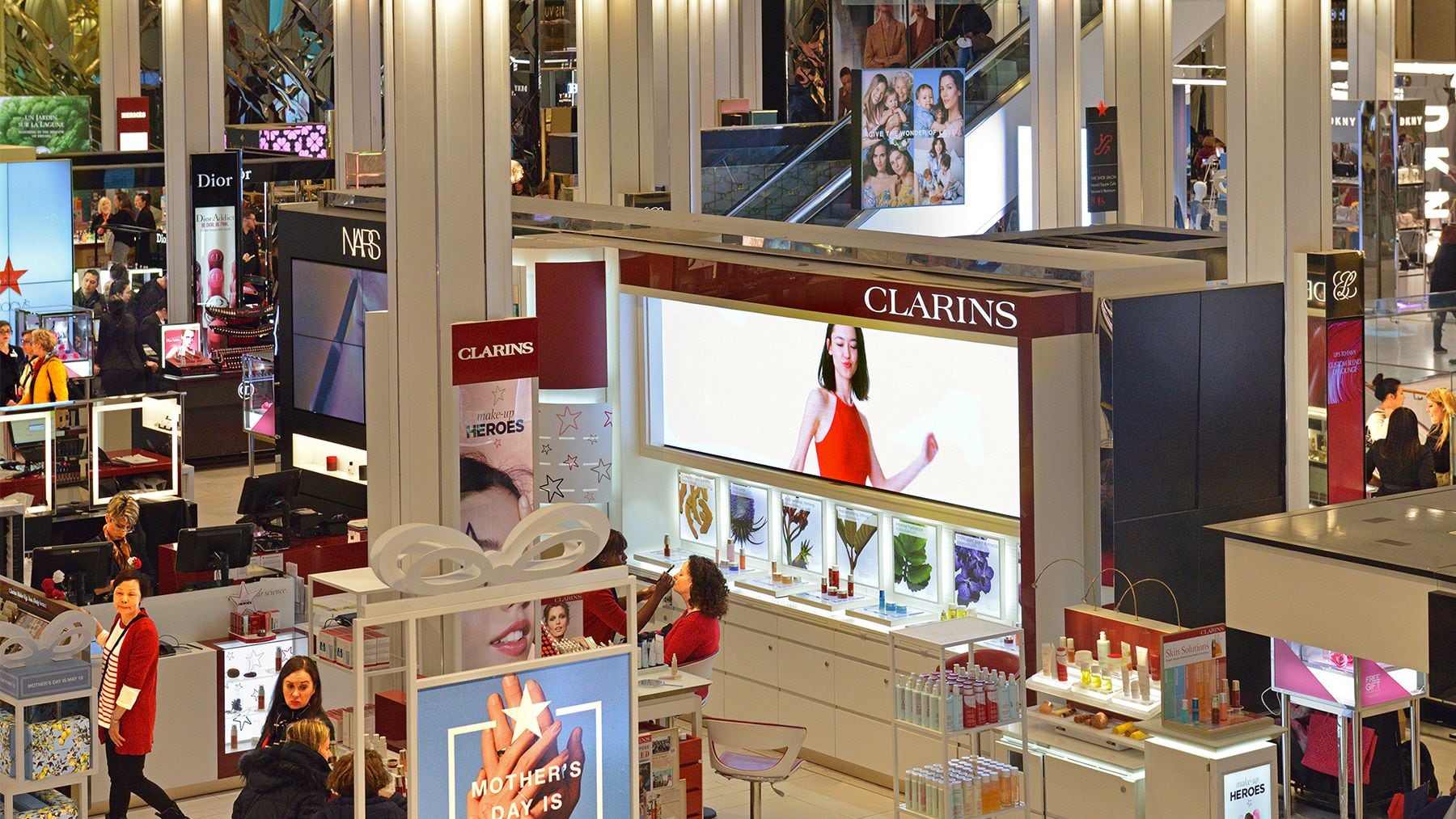
For Terry Lundgren, a former CEO of Macy’s, talk of the possible extinction of department stores is a tale as old as time.
Lundgren joined the company, then known as Federated Department Stores, nearly 50 years ago right out of college, his first choice out of a dozen job offers. His roommate could not believe him.
“He said, ‘Aren’t they going to be going out of business?’” Lundgren recalls. “Back then, it was because catalogues were emerging and he thought, ‘Well, isn’t everybody just going to read catalogues and shop that way?’”
Macy’s survived the catalogue scare, and countless other evolutions in how Americans shopped, from QVC to the rise of e-commerce. But there’s something different today about the cocktail of threats facing Macy’s and other department stores that cater to the middle class, including Kohl’s and Nordstrom. No matter how many unprofitable stores they close or innovative retail concepts they try, they keep losing customers, whether to historic online threats like Amazon, newer, more nimble competitors like Shein or off-price stalwarts including TJ Maxx that are better geared towards stretched household budgets.
Some longtime observers of these companies fear the endgame may be approaching. Last month, Macy’s announced it will close another 150 stores by 2026, effectively halving its footprint from 2018. Kohl’s and Macy’s have both been targeted by activist investors more interested in selling off their real estate assets than revitalising retail. The Nordstrom family is reportedly exploring taking its namesake chain private, as a series of turnaround plans have done little to boost revenue, which peaked in 2018, or slow a decade-long slide in the company’s stock. Belk, a chain primarily found in Southern states, filed for bankruptcy in 2021 and has also seen revenue decline under new owners.
“In and of itself, going private is not the solution to the problems,” said Neil Saunders, a managing director of retail at GlobalData. “For Nordstrom, private ownership may provide the chain with some breathing space. … For Macy’s, the current bid to take the chain private is basically a death warrant.”
To survive, experts say, these companies need more than new owners and experiments with new retail formats, such as the dozens of “boutique-sized” smaller stores Macy’s plans to open in the next few years. They must rethink the entire value proposition that they present to their target customer, starting with what they stock on their shelves and their websites.
In short, they need to find something to sell that can’t be found on Amazon’s everything store or Shein’s addictive app or TikTok Shop.
“What’s going to get people to go into any store? The answer one, two, three is product,” said Lundgren. “You can have great service and bad product … You have to have a unique product that is fair in value and exclusive or limited in distribution to your channel. Macy’s used to be the king of that.”
As difficult as that sounds, some department stores are on their way.
The IRL Advantage
Right now, department stores cannot compete with Instagram and TikTok as engines of product discovery, said Andrea Wasserman, a retail veteran and former executive at Nordstrom. But they have something online platforms do not: a physical footprint.
“For inspiration and for convenience, you still have to go into stores,” she said. “You can follow any influencer on TikTok but you still need a place to go to see a new style or brand.”
That’s where department stores, with their hundreds of locations in malls nationwide, have an opening. At a time when Shein and Temu dominate online sales with ultra-cheap, trendy wares, Spanish retailers Inditex (owner of Zara) and Mango both posted double-digit sales growth last year. Renovations and expansion in brick-and-mortar retail were a big reason why.
Mall traffic, meanwhile, is close to fully recovering to pre-pandemic levels, according to analytics firm Placer.ai. In 2023, availability of leases in shopping centres fell to their lowest rate in 15 years, according to brokerage Cushman and Wakefield.
“Department stores offer something that no other stores do: cross-category shopping,” said Rebecca Duval, retail analyst at BlueFin Research. “You can go in to get something for yourself, for your house, and for your mom, but only if [they] can speak to the consumer today.”
The Power of Brands
The problem is, consumers are returning to malls but often walking right past the department store with the big sign at the entrance. In-store sales for both Macy’s and Kohl’s declined about 5 percent in 2023 compared to the year prior. Nordstrom’s sales rose in late 2023 – but credit goes to its off-price chain Nordstrom Rack.
That’s because there’s still a sense that all department stores offer the same stale brands, many of which could be found at discount retailers or online, often at a lower price. By contrast, revitalised mall chains like Abercrombie & Fitch and PacSun lure shoppers with the promise of something unique and appealing.
“Most department stores are neither great value for money nor super premium — this makes them very easy to overlook,” said Saunders of GlobalData.
Slowly, mid-tier department stores have begun differentiating their offerings, aiming for a mix of well-known national brands, emerging labels and in-house lines offering basics at attractive prices.
Nordstrom and Macy’s have refreshed their product offerings in recent years by signing on new vendors, launching new private labels, and building online marketplaces that allow for even more brands to sell through their e-commerce stores via dropshipping. (Macy’s launched its marketplace in fall 2022, while Nordstrom will debut its version this spring).
Under its new executive overseeing private brands, Emily Erusha-Hilleque, the former design director at Target, Macy’s in particular has seen early success with its new private labels On 34th and State of Day, according to Duval. In recent years, it has phased out some of its older private brands such as Karen Scott and Alfani. Another in-house womenswear brand, And Now This, which was introduced in 2021, has also been popular and compared to premium basics label Aritzia by customers, Duval added.
Kohl’s has effectively grown its base of customers through a shop-in-shop partnership with Sephora, which will be available in every Kohl’s location by the end of 2025. To keep these new shoppers in its orbit, Kohl’s will introduce a slate of new brands this year, such as Quiksilver and Roxy and expand its new dress shop concept in select locations.
Nordstrom, meanwhile, has excelled in merchandising new products in a fun and discoverable way, according to Wasserman, pointing to its new “pop-in” collaboration with Liberty London in its New York City flagship store.
“It’s like turning around the Titanic,” said Duval. “These are massive retailers with many vendors and so much inventory coming in. But I do think there is a place for them.”
So far, these tactics have not yielded positive sales results. Sceptics say these retailers are simply too large and too set in their ways to pull off a radical transformation, and are chasing a middle class consumer who is rapidly disappearing. These sentiments have been seized upon by activist investors.
But they are making the right moves, analysts said, by offering a more convenient way of shopping, elements of surprise and delight, and most critically, a fashionable product with competitive pricing and quality.
After all, a store that offers a large selection of products and reliable service will never go out of style. In theory.
“If department stores did not exist today, then some creative young people would say, ‘Hey, why don’t we invent a retail store where you can shop for multiple categories, multiple brands, in a physical space, with some big stores and some smaller stores, as well as an online presence that allows for an omnichannel experience?’” said Lundgren. “Why wouldn’t I invent that?”



